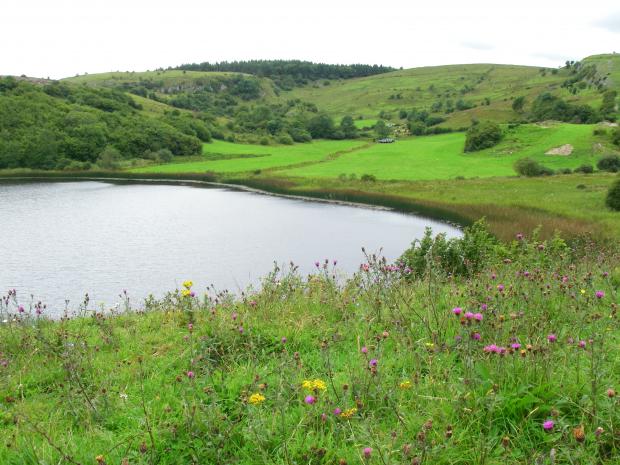
Marlbank is situated in the south-west corner of County Fermanagh and supports a range of habitats including woodlands, wetlands, grasslands, peatlands and rivers, as well as a range of important plant and animal communities.
The site consists of a series of predominantly limestone hills with a limestone escarpment along its northern edge. There are three major cave systems being the Marble Arch, Prod's Pot-Cascades and Tullyhona systems.
Marlbank has a range of surface karst topography including some of the finest limestone pavement in Northern Ireland. The pavement has a distinctive flora characterised by species such as Herb-Robert, Hart's-tongue fern, Maidenhair Spleenwort and Wall-rue.
Marlbank is a nationally, important location for calcareous grassland, supporting approximately 15% of the total resource of this already scarce type of grassland within Northern Ireland. The driest swards are dominated by the grasses Red Fescue and Sweet Vernal-grass. On limestone outcrops where soils are more calcareous, grasses such as Blue Moor-grass and Quaking-grass are common, with Glaucous Sedge and Devil's-bit Scabious.
Notable plants are widespread throughout the drier grasslands and include orchids, herbs and fungi.
The wet grasslands at Marlbank represent one of the largest areas of species-rich wet grassland in Northern Ireland. Springs and flushes represent a notable feature of the area.
Woodlands occur along the scarps and include a number of important individual woods, as well as scattered stands of trees and scrub. Together they represent one of the most extensive areas of woodland in Northern Ireland.
Over deeper, poorly drained peat deposits wet heaths have developed, often in a mosaic with fen meadow, limestone pavement or blanket bog.
Marlbank is rich in lower plants such as mosses and lichens, of particular note is the presence of the New Forest Beech Lichen which is currently only known in Ireland from this site.
Marlbank also includes a number of river catchments, the main one being the Cladagh River, important for its physical features and associated riverine flora and fauna. Fresh water fish species from Lough Macnean Lower use the river to spawn while Brown Trout, Stone Loach and 3-spined Stickleback are permanent residents. This abundance of fish attracts predators such as Otter.
Marlbank is an area with a wide range of semi-natural habitats that have been managed in a traditional way. As such it provides valuable feeding and roosting sites for a range of animals, including birds, mammals and invertebrates.
Many of these habitats are only found where traditional forms of land management are used. The use of artificial fertilisers, herbicides or the application of manure or slurry would cause a reduction in habitat quality on the site. When soils become more fertile, grasses tend to thrive, growing faster and taller. Smaller plants such as orchids are not able to compete with the tougher grasses and as a result are lost.
Related articles
- ASSI Guidance for Public Bodies/Competent Authorities
- Coastal Areas of Special Scientific Interest
- Conservation Management Plans (CMPs)
- European Marine Sites - Marine Special Areas of Conservation and Special Protection Areas
- Introduction to Conservation Management Plans (CMPs) for Northern Ireland’s Special Areas of Conservation
- Marine Conservation Zones
- Marine Protected Areas
- Marine Ramsar sites
- Portrush Coastal Zone
- Special Areas of Conservation
- Special Areas of Conservation for Harbour porpoise
- Special Protection Areas
